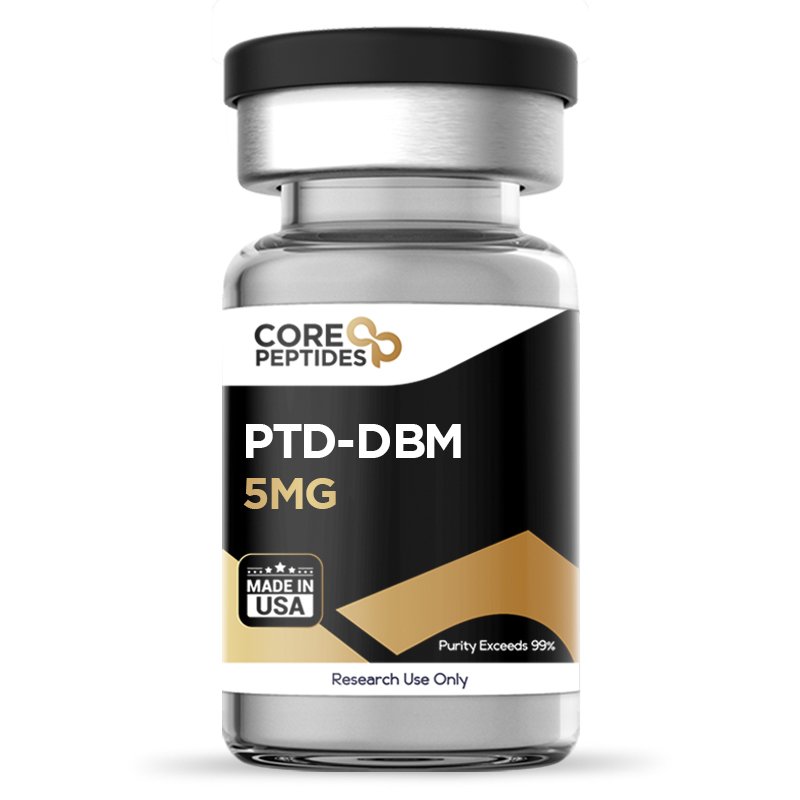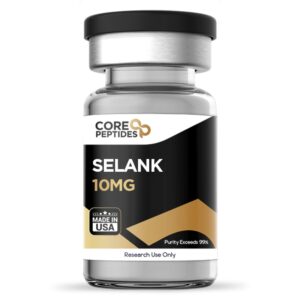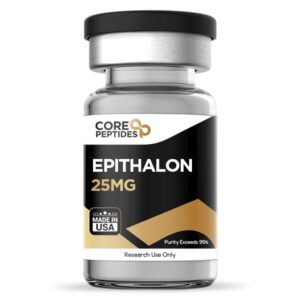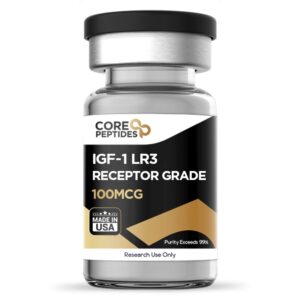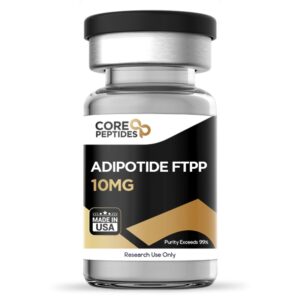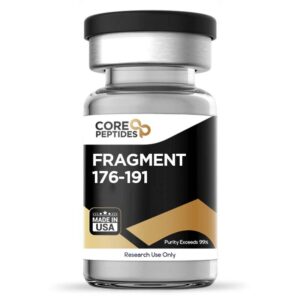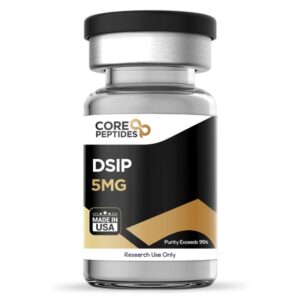PTD-DBM (5mg)
$89.00
Size: 5mg
Contents: PTD-DBM
Form: Lyophilized powder
Purity: >99%
SKU: PTD-DBM
FREE Shipping on $200+ orders
Discount per Quantity
| Quantity | Discount | Price |
|---|---|---|
| 5 - 8 | 5% | $84.55 |
| 9 + | 10% | $80.10 |
PTD-DBM Peptide
PTD-DBM peptide, short for Protein Transduction Domain-fused Dishevelled Binding Motif peptide, has been studied for its potential to stimulate follicle growth. PTD is a short sequence of amino acids that may allow the peptide to enter cells, while DBM is a sequence considered to act as a binding agent with Dishevelled (Dvl) proteins, considered highly involved in the Wnt/β-catenin signaling pathway. More specifically, PTD-DBM has been hypothesized by researchers to disrupt the interaction between CXXC5 and Dishevelled (Dvl) proteins, which appears to potentially enhance the activity of the Wnt/β-catenin signaling pathway. Studies hypothesize that this disruption might facilitate an increase in β-catenin activity. This augmented activity was observed to potentially promote hair follicle growth and induce the anagen phase, which is the growth phase of the follicle, in murine models. More precisely, the exposure of PTD-DBM in conjunction with either Wnt3a or valproic acid (VPA)—both agents believed to activate the Wnt/β-catenin pathway—exhibited an apparent synergistic action. This action was speculated by the increased expression levels of β-catenin, alkaline phosphatase (ALP), and proliferating cell nuclear antigen (PCNA). These markers are intrinsically associated with cell proliferation and are indicators of follicle function.(1)
PTD-DBM peptide appears to activate the Wnt and β-catenin signaling pathway, a complex network of proteins that may be critical in regulating cell growth, migration, and differentiation during embryonic development and the maintenance of tissues. It is also deemed crucial in processes such as cell fate determination, and appears to play a role in follicle development and cell regeneration. It may stimulate the stem cells in hair follicles, leading to the regeneration of hair and the growth of new follicles. The peptide may also increase blood microcirculation, which is believed to enhance the delivery of nutrients and oxygen to follicles to promote increased rates of growth.(1)
Chemical Makeup(2)
Molecular Structure: H-Gly-Arg-Lys-Lys-Ser-Gly-Leu-Arg-Arg-Leu-Glu-Gln-Ala-Gly-Cys-Asn-Arg-Gly-Asn-Cys-Cys-Phe-NH
Molecular Weight: 2901.53 g/mol
Other known titles: Protein Transduction Domain-fused Dishevelled Binding Motif peptide, Hair growth peptide
Research and Clinical Studies
PTD-DBM and Hair Follicles
In an investigation into the biological mechanisms underlying hair loss, coupled with an assessment of potential exposure to compounds structurally similar to PTD-DBM, the study proposed that Prostaglandin D2 (PGD2) may act as a catalyst for hair loss.(3) It purportedly induces this by enhancing the expression of CXXC5, a negative regulator of the Wnt/β-catenin signaling pathway, which plays a pivotal role in developing and regenerating hair follicles. The interaction between CXXC5 and the protein Dishevelled (Dvl) appears to impede this pathway, potentially leading to alopecia. The hypothesis suggests that PGD2 may increase CXXC5 levels through the Bone Morphogenetic Protein (BMP) signaling pathway, which is implicated in the regression of hair follicles during the catagen phase—the transitional stage in hair cycling. This upregulation of CXXC5 by PGD2 seems to inhibit Wnt/β-catenin signaling, which, in turn, may suppress follicle growth. In contrast, PTD-DBM, believed to disrupt the binding between CXXC5 and Dvl, appears to restore the function of the Wnt/β-catenin pathway and thereby may inadvertently promote hair growth. Data supporting this restoration has been published in murine model experiments where the gene for CXXC5 was disabled (knocked out) or the animals were exposed to PTD-DBM, indicating that inhibiting CXXC5 may have counterbalanced the hair loss induced by PGD2. Further, the research points to dihydrotestosterone (DHT), another significant contributor to androgenetic alopecia, intensifying hair loss by stimulating CXXC5 expression through the PGD2-mediated pathways. This suggests a complex interaction where DHT and PGD2 may collaboratively impede hair growth by a concomitant modulation of signaling pathways that involve CXXC5. Intriguingly, the study notes that concurrently inhibiting both CXXC5 and a key enzyme in the β-catenin destruction complex, Glycogen Synthase Kinase-3 beta (GSK-3β), may offer potential in promoting hair growth rather than targeting either component alone.
Further studies have investigated the mechanisms behind the peptide’s potential to suppress the interaction between CXXC5 and Dvl proteins.(4) This is presumably achieved by PTD-DBM binding to the PDZ domain of Dvl, thereby possibly preventing the suppressive action of CXXC5 on Wnt/β‐catenin signaling. Furthermore, experimental observations from the study indicated that exposure to PTD-DBM in murine models appeared to have led to hair regrowth and possibly the initiation of wound-induced hair follicle neogenesis (WIHN). In this phenomenon, new hair follicles form as part of the wound-healing process. These outcomes suggest that PTD-DBM might not only promote the anagen phase of the hair cycle but also contribute to the creation of new hair follicles in response to skin injury.
PTD-DBM and Bone Regeneration
A recent study was conducted on a murine model exposed to PTD-DBM routinely over the course of four weeks.(5) After the completion of the study, it was suggested by the researchers that the peptide may have induced the formation of new bones without histological changes. Hyun-Yi Kim et al. stated,
“The inhibitors of Dvl–CXXC5 interaction showed bone-forming effects in ex vivo and in vivo calvaria growth, and […] inhibitor recovered bone loss in postmenopausal model mice. Antibody-based drugs such as anti-Dkk-1 and anti-sclerostin antibodies [...] and PTH-based drugs are expensive [...] Therefore, the development of small-molecule compounds […] would be a valuable addition to osteoporosis [research].”
PTD-DBM and Tissue Damage
A study presented a detailed examination of the potential mechanisms by which PTD-DBM might facilitate regenerative wound healing, focusing primarily on the modulation of the Wnt/β-catenin signaling pathway.(6) The introduction of PTD-DBM was suggested by researchers to potentially enhance the regenerative healing process. This peptide has been speculated to function by preventing CXXC5 from binding to Dvl proteins, thereby facilitating the activation of the Wnt/β-catenin pathway. Apart from apparent hair growth, such activation is associated with numerous cellular processes deemed crucial for wound healing, including cell proliferation, differentiation, migration, and stem cell activation in tissue regeneration. Moreover, the study notes that the apparent activation of Wnt/β-catenin signaling by PTD-DBM may have led to an increase in markers associated with wound healing and tissue regeneration. This includes the enhancement of fibroblast activity and collagen deposition, which are believed to be essential for the structural rebuilding of damaged tissue.
In another study,(7) experimental C3H mice with cutaneous wounds were divided into three groups randomly exposed to the peptide PTD-DBM, valproic acid, or a combination of both. As a control, a separate group of experimental mice was given epidermal growth factor (EGF). After completing the study, it was suggested by the researchers that all three groups appeared to exhibit a gradual improvement in the wound-healing process. However, even more than the EGF alone, the most notable impact was reported in the group presented with the peptide and valproic acid. The research team of Soung-Hoon Lee et al. stated, “Combination [...] with PTD-DBM and VPA significantly induced reepithelialization and enhanced collagen deposition in the large wounds.”
PTD-DBM peptide is available for research and laboratory purposes only. Please review and adhere to our Terms and Conditions before ordering.
References
- Lee SH, Seo SH, Lee DH, Pi LQ, Lee WS, Choi KY. Targeting of CXXC5 by a Competing Peptide Stimulates Hair Regrowth and Wound-Induced Hair Neogenesis. J Invest Dermatol. 2017 Nov;137(11):2260-2269. doi: 10.1016/j.jid.2017.04.038. Epub 2017 Jun 6. PMID: 28595998. https://pubmed.ncbi.nlm.nih.gov/28595998/
- National Center for Biotechnology Information. "PubChem Substance Record for SID 476298902, PTD-DBM Acetate, Source: CreativePeptides" PubChem, https://pubchem.ncbi.nlm.nih.gov/substance/476298902. Accessed 3 May, 2024.
- Ryu YC, Park J, Kim YR, Choi S, Kim GU, Kim E, Hwang Y, Kim H, Han G, Lee SH, Choi KY. CXXC5 Mediates DHT-Induced Androgenetic Alopecia via PGD2. Cells. 2023 Feb 9;12(4):555. doi: 10.3390/cells12040555. PMID: 36831222; PMCID: PMC9954685.
- Ryu YC, Lee DH, Shim J, Park J, Kim YR, Choi S, Bak SS, Sung YK, Lee SH, Choi KY. KY19382, a novel activator of Wnt/β-catenin signalling, promotes hair regrowth and hair follicle neogenesis. Br J Pharmacol. 2021 Jun;178(12):2533-2546. doi: 10.1111/bph.15438. Epub 2021 May 5. PMID: 33751552; PMCID: PMC8251890.
- Hyun-Yi Kim, Sehee Choi, Ji-Hye Yoon, Hwan Jung Lim, Hyuk Lee, Jiwon Choi, Eun Ji Ro, Jung-Nyoung Heo, Weontae Lee, Kyoung Tai No, Kang-Yell Choi, Small molecule inhibitors of the Dishevelled-CXXC5 interaction are new drug candidates for bone anabolic osteoporosis therapy, EMBO Mol Med (2016)8:375-387. https://doi.org/10.15252/emmm.201505714
- Choi S, Yoon M, Choi KY. Approaches for Regenerative Healing of Cutaneous Wound with an Emphasis on Strategies Activating the Wnt/β-Catenin Pathway. Adv Wound Care (New Rochelle). 2022 Feb;11(2):70-86. doi: 10.1089/wound.2020.1284. Epub 2021 Apr 20. PMID: 33573472; PMCID: PMC9831250.
- Lee SH, Kim MY, Kim HY, Lee YM, Kim H, Nam KA, Roh MR, Min do S, Chung KY, Choi KY. The Dishevelled-binding protein CXXC5 negatively regulates cutaneous wound healing. J Exp Med. 2015 Jun 29;212(7):1061-80. doi: 10.1084/jem.20141601. Epub 2015 Jun 8. PMID: 26056233; PMCID: PMC4493411. https://www.ncbi.nlm.nih.gov/pmc/articles/PMC4493411/

